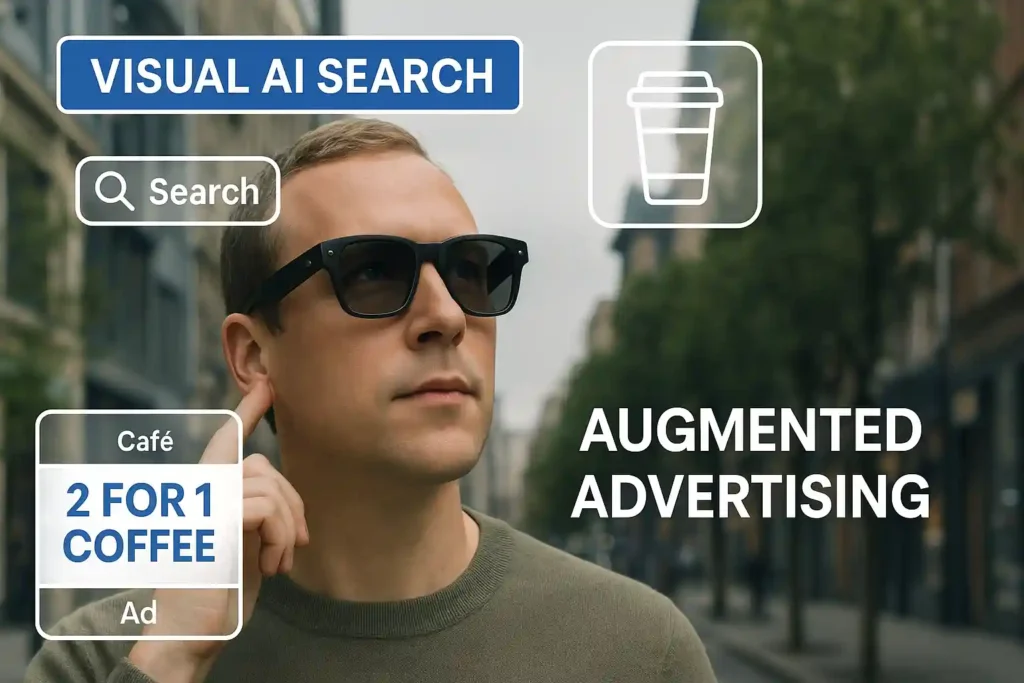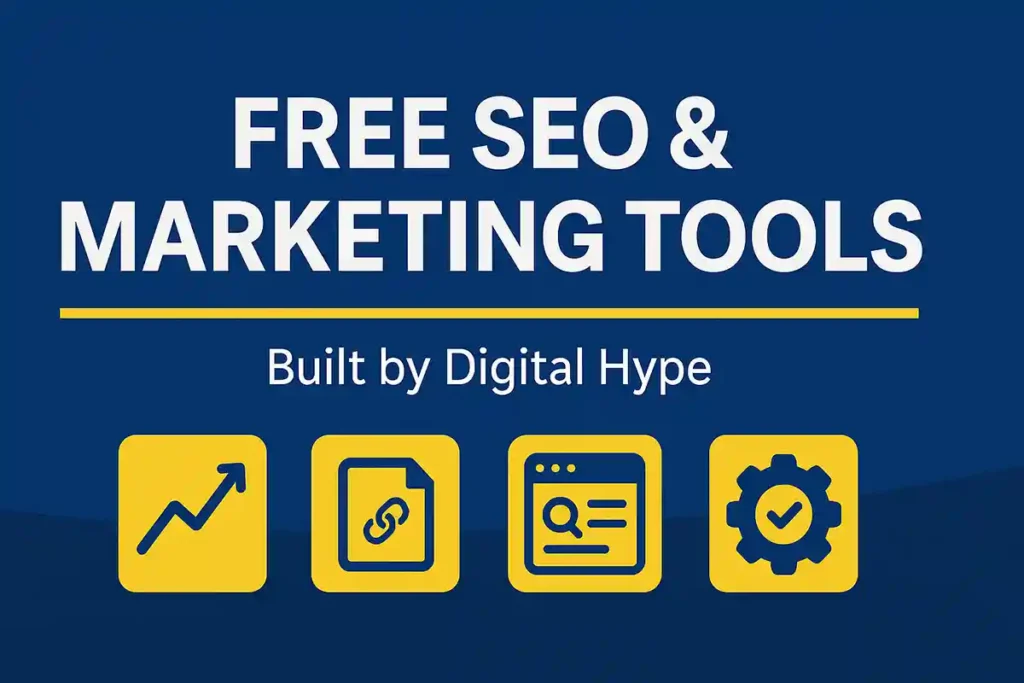I still remember the moment mobile search stopped being a novelty and became part of daily life. The shift was subtle at first, people searching on the go, asking Siri or Google Assistant quick questions, but within a few years, it had reshaped entirely digital marketing.
I get the same feeling now with AI-powered smart glasses. Meta’s latest move with its Ray-Ban Display range might not look earth-shattering today, but if these devices gain traction, they could fundamentally change how people find information and how brands reach them.
From Typing to Looking: The Rise of Visual Search
Picture this: you’re outside a restaurant in Bournemouth, you glance at the sign, and instantly reviews, menus, and booking options appear in your lens. No typing, no phone unlock, just look, and answers appear.
Or you see someone on Poole High Street wearing trainers you like. The glasses quietly identify the brand, surface stock levels, and even nudge you with a purchase option.
This is visual AI search. For marketers, the implications are huge. SEO won’t just be about words and voice queries; it’ll be about ensuring products, signage, and packaging are optimised to be recognisable to AI in the real world.
Ads That Appear in Your Line of Sight
If people start searching by looking, then advertising will inevitably follow. The future may not be banner ads, but in-the-moment overlays:
- Walk past a café in Poole and a 2-for-1 coffee offer flashes up.
- Look at a car in a forecourt and specs float beside it.
- Stroll through Bournemouth Gardens and see a promo for tonight’s live music.
It sounds futuristic, but the principle is simple: reach people right when they’re about to make a decision. The challenge? Making these ads feel helpful, not intrusive.
Who Adopts First — Businesses or Everyday Users?
My bet is on business use cases leading the way. A field engineer could wear glasses for hands-free checklists. A delivery driver could scan packages without lifting a scanner. Doctors could pull up patient info without glancing at a screen.
For consumers, adoption depends on three things: affordability, trust, and style. If they look like normal glasses, don’t feel creepy, and are priced sensibly, the mainstream might follow.
What Could Realistically Happen (and When)
Rather than speculate wildly, here’s how I see the next few years playing out if smart glasses take off:
| Speculation | Likelihood | Horizon | What Needs to Be True | Watch-outs |
| Visual AI search (products, places, reviews) | High | 12–36 months | Reliable recognition, low-lag UX, solid data | Misidentification, privacy |
| Contextual AR offers (real-time promos) | Medium-high | 18–36 months | Consent, merchant adoption, GPS accuracy | ASA/CAP rules, “creep factor” |
| AI-first shopping (look → compare → buy) | High | 12–24 months | SKU feeds, retailer integration | Platform bias |
| Tourism overlays (facts, wayfinding, events) | High | 12–24 months | Local data partnerships | UX clutter |
| Hands-free creator tools (auto-tagged content) | High | 6–18 months | Social integrations, robust tagging | Consent/IP rights |
| Personalised “attention ads” (habit/calendar-based) | Medium | 24–48 months | Strong opt-ins, clear utility | GDPR fatigue |
The UK Trust & Regulation Hurdle
Here’s where I think adoption could stumble: regulation. In the UK, any ad that appears in AR will need to be clearly marked as such under ASA/CAP rules. And anything involving location or behavioural profiling falls squarely under GDPR consent.
That means advertisers can’t just flood your field of vision with offers; they’ll need explicit permission. Get this wrong, and glasses could go the way of Google Glass: a tech demo rather than a daily essential.
How Businesses Can Start Preparing Now
Even though this feels a few years away, there are practical steps local and national businesses can start on today:
- Make logos and packaging AI-recognisable.
- Keep local listings accurate so AI can surface correct details.
- Experiment with overlay-ready creative rather than static assets.
- Track developments in Generative Engine Optimisation (GEO) — preparing content for AI-driven environments.
A Grounded Look Ahead
I don’t see everyone swapping their iPhone for Ray-Bans in the next year. But in 2–3 years, I’d expect early adoption among creators, business users, and tech enthusiasts. If the glasses prove helpful, and crucially, if they feel normal to wear, broader consumer uptake will follow.
My Take
I’ve been around long enough to know hype cycles come and go. However, if I were to bet, I’d put money on visual AI search and augmented overlays becoming part of daily life by the late 2020s or the early 2030s.
The businesses that prepare now, by cleaning up data, making their brand assets AI-friendly, and thinking beyond clicks to looks and overlays, will be the ones customers see first, both online and in real life.


